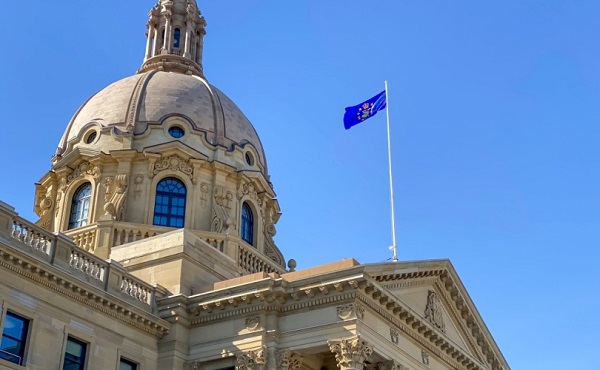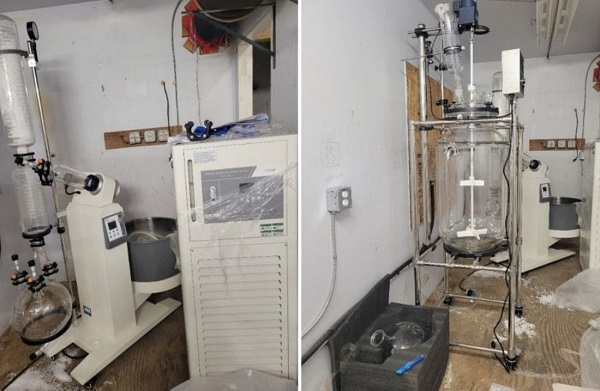Alberta
Alberta government must restrain spending in upcoming budget to avoid red ink

From the Fraser Institute
By Tegan Hill and Milagros Palacios
Whether due to U.S. tariffs or lower-than-expected oil prices, the Smith government has repeatedly warned Albertans that despite a $4.6 billion projected budget surplus in 2024/25, Alberta could soon be in the red. To help avoid this fate, the Smith government must restrain spending in its upcoming 2025 budget.
These are not simply numbers on a page; budget deficits have real consequences for Albertans. For one, deficits fuel debt accumulation. And just as Albertans must pay interest on their own mortgages or car loans, taxpayers must pay interest on government debt. Each dollar spent paying interest is a dollar diverted from programs such as health care and education, or potential tax relief. This fiscal year, provincial government debt interest costs will reach a projected $650 per Albertan.
And while many risk factors are out of the government’s direct control, the government can control its own spending.
In its 2023 budget, the Smith government committed to keep the rate of spending growth to below the rate of inflation and population growth. This was an important step forward after decades of successive governments substantially increasing spending during good times—when resource revenues (including oil and gas royalties) were relatively high (as they are today)—but failing to rein in spending when resource revenue inevitably declined.
But here’s the problem. Even if the Smith government sticks to this commitment, it may still fall into deficit. Why? Because this government has spent significantly more than it originally planned in its 2022 mid-year plan (the Smith government’s first fiscal update). In other words, the government’s “restraint” is starting from a significantly higher base level of spending. For example, this fiscal year it will spend $8.2 billion more than it originally planned in its 2022 mid-year plan. And inflation and population growth only account for $3.1 billion of this additional spending. In other words, $5.1 billion of this new spending is unrelated to offsetting higher prices or Alberta’s growing population.
Because of this higher spending and reliance on volatile resource revenue, red ink looms.
Indeed, while the Smith government projects budget surpluses over the next three fiscal years, fuelled by historically high resource revenue, if resource revenue was at its average of the last two decades, this year’s $4.6 billion projected budget surplus would turn into a $5.8 billion deficit. And projected budget surpluses in 2025/26 and 2026/27 would flip to budget deficits. To be clear, this is not a far-fetched scenario—resource revenue plummeted by nearly 70 per cent in 2015/16.
In contrast, if resource revenue fell to its average (again, based on the last two decades) but the Smith government held to its original 2022 spending plan, Alberta would still have a balanced budget in 2026/27.
Bottom line; had the Smith government not substantially increased spending over the last two years, Alberta’s spending levels today would align with more stable ongoing levels of revenue, which would put Alberta on more stable fiscal footing in the years to come.
Premier Smith has warned Albertans a budget deficit may be on the way. To mitigate the risk of red ink moving forward, the Smith government should show real spending restraint in its 2025 budget.
Alberta
Alberta takes big step towards shorter wait times and higher quality health care

From the Fraser Institute
On Monday, the Smith government announced that beginning next year it will change the way it funds surgeries in Alberta. This is a big step towards unlocking the ability of Alberta’s health-care system to provide more, better and faster services for the same or possibly fewer dollars.
To understand the significance of this change, you must understand the consequences of the current (and outdated) approach.
Currently, the Alberta government pays a lump sum of money to hospitals each year. Consequently, hospitals perceive patients as a drain on their budgets. From the hospital’s perspective, there’s little financial incentive to serve more patients, operate more efficiently and provide superior quality services.
Consider what would happen if your local grocery store received a giant bag of money each year to feed people. The number of items would quickly decline to whatever was most convenient for the store to provide. (Have a favourite cereal? Too bad.) Store hours would become less convenient for customers, alongside a general decline in overall service. This type of grocery store, like an Alberta hospital, is actually financially better off (that is, it saves money) if you go elsewhere.
The Smith government plans to flip this entire system on its head, to the benefit of patients and taxpayers. Instead of handing out bags of money each year to providers, the new system—known as “activity-based funding”—will pay health-care providers for each patient they treat, based on the patient’s particular condition and important factors that may add complexity or cost to their care.
This turns patients from a drain on budgets into a source of additional revenue. The result, as has been demonstrated in other universal health-care systems worldwide, is more services delivered using existing health-care infrastructure, lower wait times, improved quality of care, improved access to medical technologies, and less waste.
In other words, Albertans will receive far better value from their health-care system, which is currently among the most expensive in the world. And relief can’t come soon enough—for example, last year in Alberta the median wait time for orthopedic surgeries including hip and knee replacements was 66.8 weeks.
The naysayers argue this approach will undermine the province’s universal system and hurt patients. But by allowing a spectrum of providers to compete for the delivery of quality care, Alberta will follow the lead of other more successful universal health-care systems in countries such as Australia, Germany, the Netherlands and Switzerland and create greater accountability for hospitals and other health-care providers. Taxpayers will get a much better picture of what they’re paying for and how much they pay.
Again, Alberta is not exploring an untested policy. Almost every other developed country with universal health care uses some form of “activity-based funding” for hospital and surgical care. And remember, we already spend more on health care than our counterparts in nearly all of these countries yet endure longer wait times and poorer access to services generally, in part because of how we pay for surgical care.
While the devil is always in the details, and while it’s still possible for the Alberta government to get this wrong, Monday’s announcement is a big step in the right direction. A funding model that puts patients first will get Albertans more of the high-quality health care they already pay for in a timelier fashion. And provide to other provinces an example of bold health-care reform.
Alberta
Alberta’s embrace of activity-based funding is great news for patients

 From the Montreal Economic Institute
From the Montreal Economic Institute
Alberta’s move to fund acute care services through activity-based funding follows best practices internationally, points out an MEI researcher following an announcement made by Premier Danielle Smith earlier today.
“For too long, the way hospitals were funded in Alberta incentivized treating fewer patients, contributing to our long wait times,” explains Krystle Wittevrongel, director of research at the MEI. “International experience has shown that, with the proper funding models in place, health systems become more efficient to the benefit of patients.”
Currently, Alberta’s hospitals are financed under a system called “global budgeting.” This involves allocating a pre-set amount of funding to pay for a specific number of services based on previous years’ budgets.
Under the government’s newly proposed funding system, hospitals receive a fixed payment for each treatment delivered.
An Economic Note published by the MEI last year showed that Quebec’s gradual adoption of activity-based funding led to higher productivity and lower costs in the province’s health system.
Notably, the province observed that the per-procedure cost of MRIs fell by four per cent as the number of procedures performed increased by 22 per cent.
In the radiology and oncology sector, it observed productivity increases of 26 per cent while procedure costs decreased by seven per cent.
“Being able to perform more surgeries, at lower costs, and within shorter timelines is exactly what Alberta’s patients need, and Premier Smith understands that,” continued Mrs. Wittevrongel. “Today’s announcement is a good first step, and we look forward to seeing a successful roll-out once appropriate funding levels per procedure are set.”
The governments expects to roll-out this new funding model for select procedures starting in 2026.
* * *
The MEI is an independent public policy think tank with offices in Montreal, Ottawa, and Calgary. Through its publications, media appearances, and advisory services to policymakers, the MEI stimulates public policy debate and reforms based on sound economics and entrepreneurship.
-

 COVID-192 days ago
COVID-192 days agoFauci, top COVID officials have criminal referral requests filed against them in 7 states
-

 Business2 days ago
Business2 days agoTimeline: Panama Canal Politics, Policy, and Tensions
-

 Health2 days ago
Health2 days agoRFK Jr. Shuts Down Measles Scare in His First Network Interview as HHS Secretary
-

 International2 days ago
International2 days agoTrump White House will ignore reporter emails that include ‘preferred pronouns’ in signature
-

 COVID-191 day ago
COVID-191 day agoCDC Vaccine Safety Director May Have Destroyed Records, Says Sen. Ron Johnson
-

 2025 Federal Election2 days ago
2025 Federal Election2 days agoTwo Canadian police unions endorse Pierre Poilievre for PM
-

 2025 Federal Election2 days ago
2025 Federal Election2 days agoCarney needs to cancel gun ban and buyback
-

 Business1 day ago
Business1 day agoCanadian Police Raid Sophisticated Vancouver Fentanyl Labs, But Insist Millions of Pills Not Destined for U.S.







